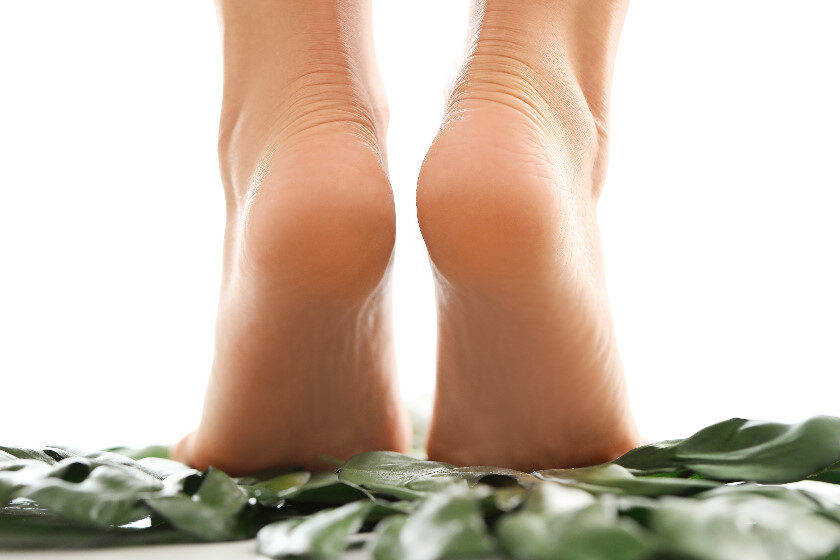
8 easy solutions to improve blood circulation in legs & feet
Blood circulation is essential to maintain the function of tissues of the body. The legs are often affected by reduced or compromised blood circulation, leading to vascular problems like varicose veins, deep vein thrombosis, or leg artery blockage (peripheral arterial disease or PAD).
Often, when doctors use the term “reduced blood circulation in legs”, it is meant to represent reduced arterial blood flow, causing pain in leg muscles while walking (claudication). If undiagnosed and untreated, this may progress to cause pain at rest, ulcers, or gangrene of toes. The other pattern of impaired blood circulation is varicose veins and venous insufficiency, in which there is pooling or stagnation of venous blood in legs & feet and may result in pigmentation of ankle, swelling or leg ulcers.
8 easy tips to improve blood circulation in legs
- Walking This is the simplest yet one of the most effective methods to improve blood circulation in the legs. Regular walking at a comfortable pace for 1 to 2 km every day will improve collaterals (small blood vessels) in legs and can be very useful in early stages of PAD. Sometimes, weight loss and muscle strengthening exercises may be required to enable a patient to walk better. Walking on ground level is preferable than an incline. In case outdoor walking may be difficult, an alternative would be walking on a treadmill indoors.
- Foot & Ankle exercises/ Tip toe movements For people who have problems with stasis of vein blood or swelling, active ankle exercises or tip toe movements will be useful to improve the return of impure blood back to the heart. Improvement in ankle mobility and use of the calf muscle ( which is also known as the peripheral heart) is a very valuable adjunct to treatment of circulation issues. There is no limit to the number of times that this exercise should be done. However, sets of 8 to 10 rotations for each foot, repeated 5 to 7 times everyday should be a good starting point.
Also read- Best Workouts for blood Circulation - Leg elevation (for vein problems) By elevating the legs while sitting and while sleeping, gravity aided return of venous blood flow helps relieve the stagnant blood in feet. However, a word of caution for those with impaired artery flow: elevation may reduce artery blood flow and aggravate symptoms in patients with PAD. The simplest elevation method would be putting a pillow or mattress underneath the legs while sleeping. There are also readymade wedge shaped cushions available on online shopping portals for this purpose. For those suffering from back pain or tight thigh ( hamstring) muscles, elevation should be done with the knee in a slightly flexed position to keep the muscles in a relaxed position.
- Yoga Various yoga poses like mountain pose, downward dog and triangle pose are helpful to improve flexibility as well as reduce pain and stiffness in leg muscles.
- Massage A light massage is beneficial to decrease the swelling and tightness as well as provides relaxation to tight muscles in legs. There are no specific oils which are scientifically recommended. The commonly used ones are coconut oil or olive oil. In case of edema or leg swelling, the direction of massage is also important: it should be done gently from below upwards, i.e from the feet towards the knee.
- Compression stockings Wearing proper size and adequate compression stockings will reduce swelling and aid in improving vein blood flow. Hence, vascular and endovascular specialists consider it as one of the most useful modes of conservative treatment for vein problems. Although there are many companies and varieties of stockings available, always confirm with your vascular specialist which ones would be suitable for you. The technique of wearing stockings properly is also important, which will be later demonstrated in one of our videos.
- Warm bath/ warm cover The warm water (not hot water) helps your blood vessels expand and hence aids the blood to flow properly. Some people with vasospastic problems like Raynaud’s phenomenon will notice immense benefit by covering their hands and feet with warm woollen gloves or socks.
- Stay hydrated Drink plenty of water throughout the day to ensure there is no hyper viscosity of blood. In fact, one of the causes of sudden clotting in leg arteries or veins is dehydration.
While all these are great natural ways to improve blood circulation to your legs, if you are suffering from blood circulation issues, it is best to consult a vascular & endovascular specialist.
Conclusion:
Maintaining healthy blood circulation in your legs is crucial for preventing and managing conditions such as varicose veins, peripheral arterial disease (PAD), and deep vein thrombosis (DVT). The eight simple strategies outlined—ranging from regular walking and specific leg exercises to wearing compression stockings and staying hydrated—serve as effective ways to enhance vascular health. Incorporating these practices into your daily routine can lead to significant improvements in leg circulation, alleviate symptoms of existing vascular conditions, and reduce the risk of developing complications. Remember, while these measures are beneficial, they are complementary to the professional medical advice provided by vascular specialists like Dr. Sumit Kapadia. For persistent issues or severe symptoms, it is essential to consult a healthcare professional to receive tailored treatment plans that address the specific needs of your vascular health.
FAQs: Related to Improving Blood Circulation in Legs & Feet
Regular physical activities such as walking, cycling, and swimming are excellent for enhancing blood circulation. Additionally, leg elevation, massage, and warm baths can help increase blood flow.
Yes, with appropriate interventions like exercise, use of compression garments, dietary changes, and in some cases, medical procedures, blood flow to the legs can be significantly improved or restored.
While specific medications should be prescribed by a healthcare provider, drugs such as pentoxifylline and cilostazol are commonly used to improve circulation in leg conditions like peripheral artery disease (PAD).
Vitamins that are beneficial for circulation include Vitamin E, which helps prevent blood clots, and Vitamin C, known to strengthen blood vessel walls. Magnesium and Omega-3 fatty acids are also helpful for improving blood flow.
While some causes of poor leg circulation can be managed and improved with lifestyle changes and treatment, chronic conditions like PAD may require ongoing management. The approach depends largely on the underlying cause.
Regular exercise, elevating your legs, massages, and maintaining a healthy weight are effective home remedies. Also, consuming ginger, garlic, and turmeric can improve blood circulation due to their anti-inflammatory properties.
Natural methods to help open blocked veins include staying active, reducing sodium intake, increasing hydration, and consuming foods rich in antioxidants and anti-inflammatory properties.
Drinks that enhance circulation include plenty of water, green tea, which contains antioxidants that help improve blood flow, and beetroot juice, known for its high nitrate content that aids in vascular relaxation and blood pressure reduction.
Drinks that enhance circulation include plenty of water, green tea, which contains antioxidants that help improve blood flow, and beetroot juice, known for its high nitrate content that aids in vascular relaxation and blood pressure reduction.
Follow us on YouTube

MBBS, MS, MRCS, DNB-Fellow
Dr. Sumit Kapadia
Dr. Sumit Kapadia / MR KAPADIA SUMIT a gold-medalist from Baroda Medical College, obtained his general surgical training and senior residency from SSG Hospital, Vadodara.

MBBS, MS, MRCS, DNB-Fellow
Dr. Sumit Kapadia
Dr. Sumit Kapadia / MR KAPADIA SUMIT a gold-medalist from Baroda Medical College, obtained his general surgical training and senior residency from SSG Hospital, Vadodara.




